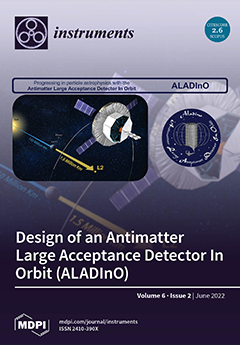Open AccessArticle
A High-Density Polarized 3He Gas–Jet Target for Laser–Plasma Applications
by
Pavel Fedorets, Chuan Zheng, Ralf Engels, Ilhan Engin, Herbert Feilbach, Ulrich Giesen, Harald Glückler, Chrysovalantis Kannis, Franz Klehr, Manfred Lennartz, Heinz Pfeifer, Johannes Pfennings, Claus Michael Schneider, Norbert Schnitzler, Helmut Soltner, Robert Swaczyna and Markus Büscher
Cited by 7 | Viewed by 2864
Abstract
A laser-driven spin-polarized
3He
2+-beam source for nuclear–physics experiments and for the investigation of polarized nuclear fusion demands a high-density polarized
He gas-jet target. Such a target requires a magnetic system providing a permanent homogeneous holding field for the nuclear
[...] Read more.
A laser-driven spin-polarized
3He
2+-beam source for nuclear–physics experiments and for the investigation of polarized nuclear fusion demands a high-density polarized
He gas-jet target. Such a target requires a magnetic system providing a permanent homogeneous holding field for the nuclear spins plus a set of coils for adjusting the orientation of the polarization. Starting from a transport vessel at a maximum pressure of 3 bar, the helium gas is compressed for a short time and can be injected into a laser–interaction chamber through a non-magnetic opening valve and nozzle, thus forming jets with densities of about a few
cm
−3 and widths of about 1 mm. The target comprises a 3D adjustment system for precise positioning of the jet relative to the laser focus. An auxiliary gas system provides remote target operation and flushing of the gas lines with Ar gas, which helps to reduce polarization losses. The design of the target, its operation procedures and first experimental results are presented.
Full article
►▼
Show Figures




